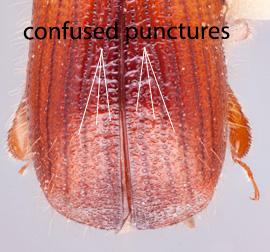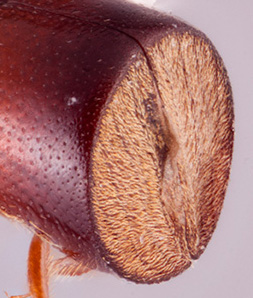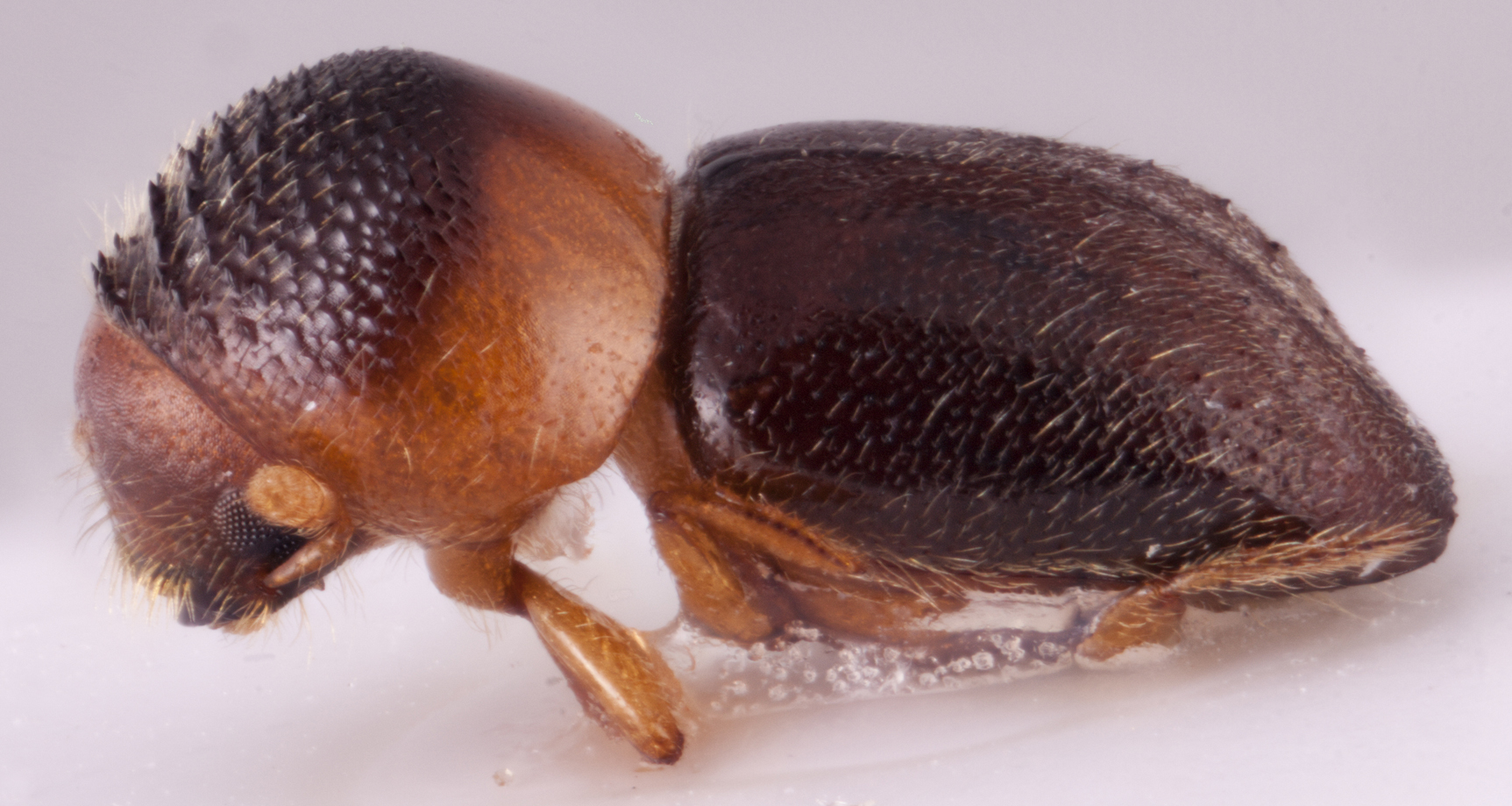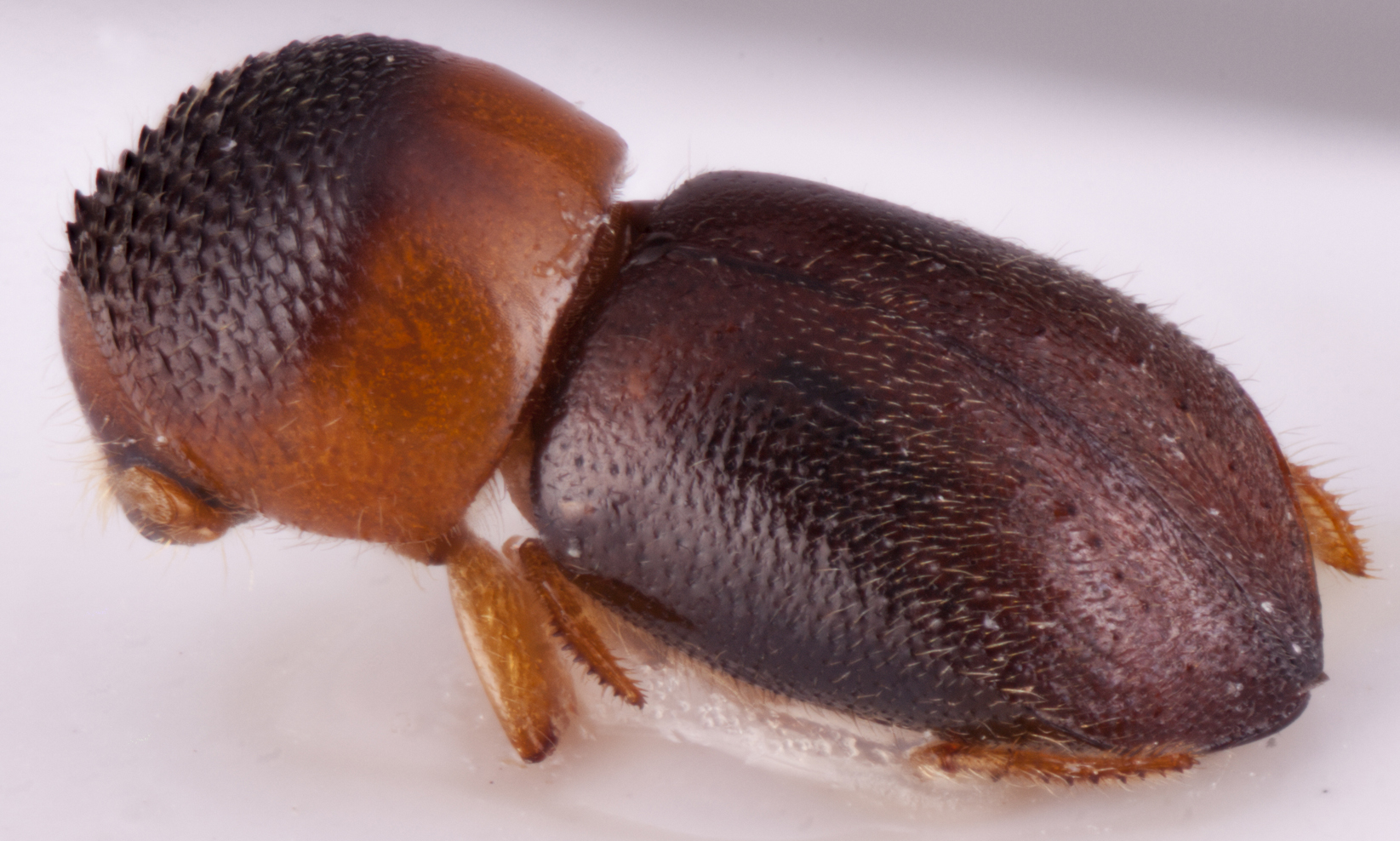Diuncus corpulentus
|
Diuncus corpulentus lateral; R.K. Osborn |
|
Diuncus corpulentus dorsal; R.K. Osborn |
|
Diuncus corpulentus declivity; R.K. Osborn |
|
Diuncus corpulentus frontal; R.K. Osborn |
Taxonomic history
Xyleborus corpulentus Eggers, 1930: 198.
Diuncus corpulentus (Eggers): Hulcr and Cognato, 2009: 30.
Diagnosis
1.6−3.2 mm long (mean = 2.66 mm; n = 5); 1.33−2.31 times as long as wide. This species can be distinguished by the elytralelytral:
pertaining to the elytra
discdisc:
the flat central upper surface of any body part (e.g. pronotum and elytra) convexconvex:
convexconvex:
appearing rounded ; declivitaldeclivital:
; declivitaldeclivital:
pertaining to the elytral declivity
summit armed by along interstriaeinterstria:
longitudinal spaces along the elytra between the striae, which is not as<br />
impressed and bear smaller punctures.
 2; declivitaldeclivital:
2; declivitaldeclivital:
pertaining to the elytral declivity
interstriae 3, 5, 6 bearing a uniserate row of denticlesdenticle:
a small tooth, the sides of which are equal and the tip is above the middle of the base along its length; interstrial setaeseta:
along its length; interstrial setaeseta:
small hair-like or scale-like structure
minute, strongly confusedconfused:
of markings, having indefinite outlines or running together as lines or spots without definite pattern; usually referring to punctures , recumbentrecumbent:
, recumbentrecumbent:
pertaining to setae that are flat against the cuticle
 , as long as length between setae; and bicolored elytraelytron:
, as long as length between setae; and bicolored elytraelytron:
the two sclerotized forewings of beetles that protect and cover the flight wings
and pronotumpronotum:
the dorsal surface of the thorax
that are darker at the apicalapex:
point or edge furthest from the body; opposite of base
 areas.
areas.
May be confused with
Diuncus dossuarius and D. javanus
Distribution
China (Hainan, Xizang, Yunnan), India (Andaman Is, Assam, Arunachal Pradesh, Meghalaya, West Bengal), Laos, Nepal, Taiwan, Thailand, Vietnam
Host plants
polyphagous (Beeson 1930Beeson 1930:
Beeson CFC. 1930. The biology of the genus Xyleborus , with more new species. Indian Forest Records 14: 209-272., Maiti and Saha 2004Maiti and Saha 2004:
Maiti PK, Saha N. 2004. Fauna of India and the adjacent countries. Scolytidae: Coleoptera (bark and ambrosia beetles). Vol. 1. Part 1. Zoological Survey of India, Kolkata, 268 pp.)
Remarks
Hulcr and Cognato (2009) found it in association with Hadrodemius globus (Blandford) in Thailand.
DNA data
Sequences available for COI and CAD.





